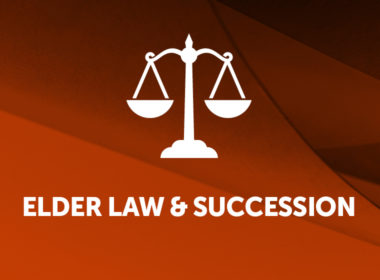Key decisions
- In the Estate of Brown [2021] SASC 113
- In the Will of Mary Elizabeth Patchett (deceased) [2021] QSC 269 (‘Patchett’)
- Re Middleton [2021] QSC 264
- Application of Browne as executor of the estate of Russell [2021] NSWSC 1340
- Hans-Egon Bruno Bernhart Metzner v Jaqueline Rita Metzner [2021] NSWSC 1336
- Ibrahim v Nasr [2021] NSWSC 1321
Seeking probate of non-existent, partly missing and unfound wills
Need convincing evidence of the existence of a will
Colin Brown’s last known will was made in July 2014. Thereafter, in April 2016, he signed a note written by his nephew, David. The note stated that David was to inherit Colin’s house and its contents. In February 2018, Colin wrote David a letter stating that David was still to inherit the house and all contents on Colin’s death. However, by the July 2014 will, David was left $50,000 and the contents of the house but the residue of the estate, including the house, was given to Scouts SA.
After Colin’s death in December 2018, David sought an order that a reconstructed will (based on the April 2016 note) be admitted to probate; alternatively that the April 2016 note be admitted to probate as an informal will; and further in the alternative that the April 2016 note be treated as an informal revocation of the July 2014 will so that Colin died intestate.
The Court in In the Estate of Brown [2021] SASC 113 (Stanley J) found there was no evidence that Colin, a person who had used a solicitor to make his wills, had made another will in circumstances where searches with solicitors had not disclosed one. Moreover, the evidence didn’t allow the presumption of revocation of a lost will to be rebutted (at [75]).
The Court considered that the April 2016 note did not truly record Colin’s testamentary intentions but was intended to deceive David. It therefore could not constitute an informal will or an informal revocation of Colin’s last known will. The July 2014 will was admitted to probate.
A copy of missing pages included
Mary Patchett executed a will on 2 October 2014. It comprised six pages which she joined by a paper clip. She gave the document to Neil Patchett for safe keeping. After her death, the six pages were found to comprise four original pages and two copy pages. A search failed to reveal or produce any awareness of the two missing original pages.
The Court agreed with Neil’s theory that Mary must have copied the will after execution and mistakenly included two copy pages when the will was reassembled (In the Will of Mary Elizabeth Patchett (deceased) [2021] QSC 269 (‘Patchett’) (Bradley J) at [11]). The Court doubted whether the presumption of revocation by destruction applied where only two pages of the will last traced to the testator were missing but considered the presumption was rebutted because the will was given to Neil for safekeeping (at [17(d)].
The Court therefore granted probate of the combined original and copy pages limited until the original missing pages or more authenticated evidence was produced.
Sufficient proof of contents of a missing will
Kevin Middleton’s long term de facto partner had four children, including Paul Conomos. After Kevin’s death, Paul alleged that Kevin had made a will, showed it to him, explained its contents, and gave him a copy (which he had later lost). The existence of a will with similar terms was supported by independent evidence. The Court in Re Middleton [2021] QSC 264 (Jackson J) considered this was enough to discharge the onus of establishing the contents of the will (at [33]).
The original will had been in Kevin’s possession and could not be found. Unlike the situation in Patchett, the presumption of revocation applied in that circumstance. It is based on the probability that if a will, traced to the possession of the deceased, is not found on death, it has been revoked by destruction by the deceased. There was evidence that the will was kept in a briefcase in the deceased’s unit. When seen by Paul after the deceased’s death, the unit showed signs of having been looted or vandalised. The Court found this evidence supported the possible inference that the original will went missing in circumstances other than intentional destruction by the deceased (at [37]). Accordingly, the Court ordered a grant of representation in relation to the lost will.


